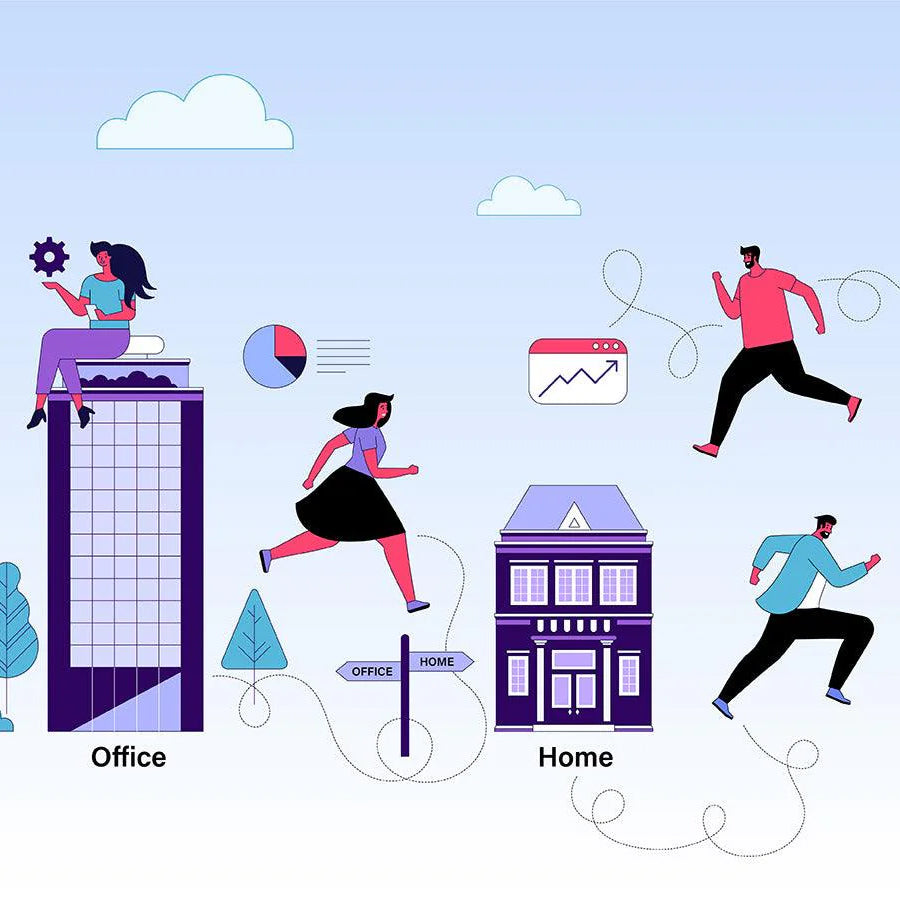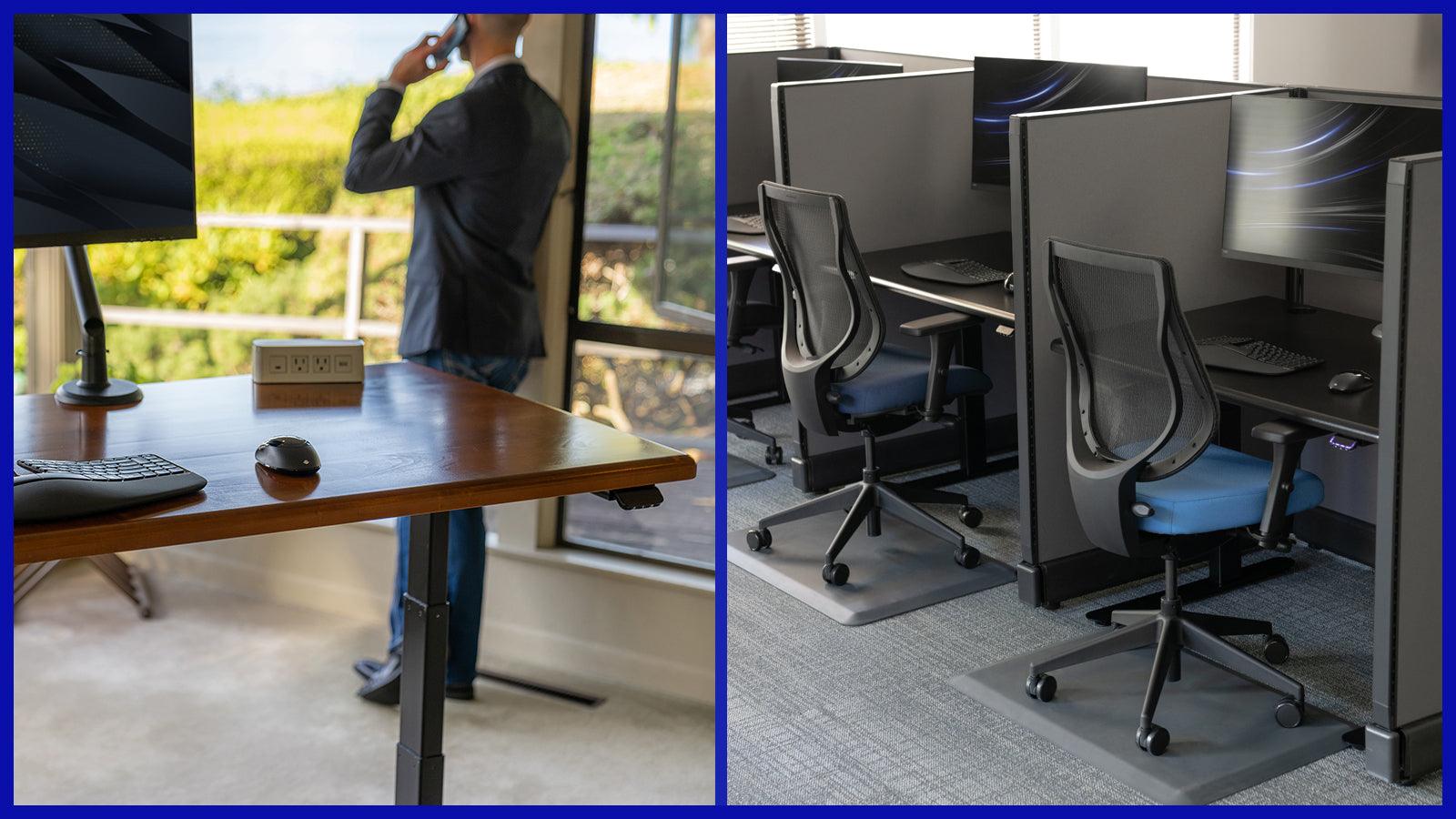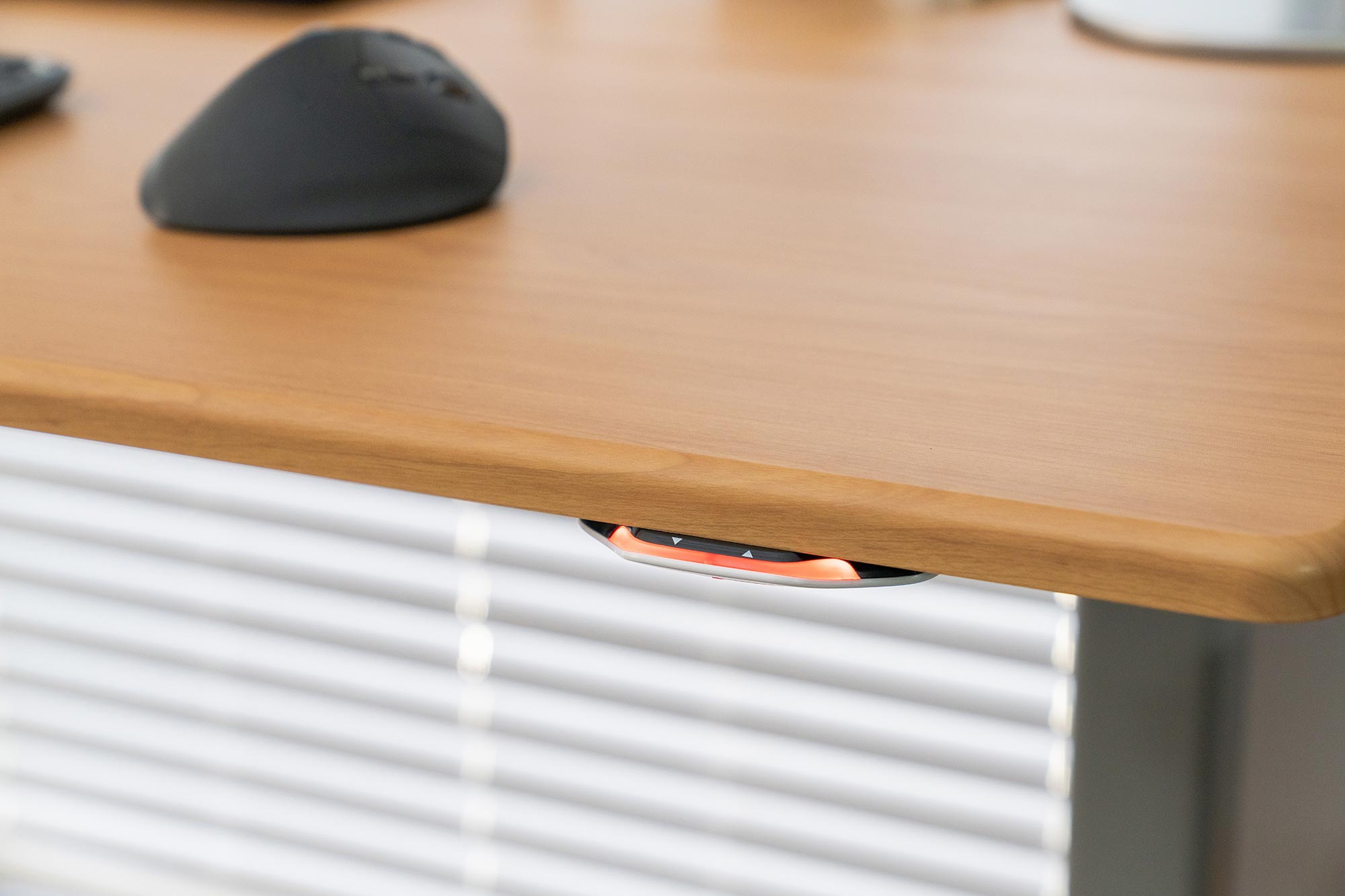Just as mainframe computer terminals evolved into PCs and eventually into laptops, tablets and smartphones that we carry along with us wherever we go to get our work done completely untethered from the office, our workstations are evolving as well. Moreso now as a result of the pandemic than ever before.
After WWII, wooden desks were widely replaced with sturdy tubular steel desks, what vintage furniture collectors now lovingly refer to as "tanker desks" because they were built like army tanks, and weighed almost as much. Then along came cubicle farms and later, benching desks as the amount of personal space allocated to each employee shrank and shrank in the name of real estate efficiency. By the time COVID-19 struck, the average American office building allocated only 175 square feet per employee. While the sense of collaboration went up, so did germ spread, and personal productivity went down along with the loss of privacy.
And then came the great office worker diaspora of 2020, when social distancing became the new mantra. Employees who were still working in a commercial office got pushed apart with a sheet of acrylic and a plant to separate them from their nearest co-workers or patrons, while the majority of them were sent all the way back to their homes to make an office sitch out of their sofa, bed or kitchen table.
The most progressive employers, particularly in sectors like tech and healthcare, wasted no time in offering stipends to their workers to outfit their home offices with ergonomic workstations, webcams, headsets; anything they might need to be productive for a few months.
It is estimated that over a million standing desks were sold in that short period of time just to newly homebound office workers whose employers sprung for it; albeit tens of millions went to work at less than ergonomically-ideal "workstations" like kitchen counters. Most employers would not fund requests for home office upgrades, some even fearing that funding a standing desk for a home office would make it that much harder to lure employees back to the corporate campus after the viral melee was over.
A few months turned into six months. Then nine. Then a year. Then 18 months. An estimated 70% of America's office workers were still working from home at that point, the vast majority of them still at poorly outfitted workstations. It is absolutely to no one's surprise that ergonomic injury claims have skyrocketed over the past 18 months.
At the time of this writing (September 2021), most companies had planned to have the majority of their employees back to the office, but the delta variant changed all that. Microsoft announced this week that their employees will continue to work from home indefinitely and Twitter previously announced that virtually all their office workers can plan to continue to work from home permanently. But most employers we surveyed this week say they hopefully expect to reopen their offices sometime in Q2 of 2022. And when that time comes, many major employers like American Express and Amazon have already declared that all employees will be able to work from home at least two days a week. Google approved 85% of employee requests to work from home permanently or relocate.
What we are witnessing right now is a "second WFH wave," another boom cycle in standing desk purchases as legions of office workers retreat from the campus back to their home offices and hunker down for another winter of Zoom-life.
And we've learned during this process that this is probably not the last wave; that the nature of the novel coronavirus pandemic is that it continues to be novel, to spin off new variants—be it the lambda, mu, or whichever Greek letter variant that comes next, or after that one or the next one—that may again spread even more virulently, be more deadly, be more evasive of the vaccine, and ultimately overwhelm our health care system.
How many more times will our workforce pulse back and forth?
Of course, a significant portion of America's 100 million office workers has already resolved to stay fleet-footed, adopting the hybrid model where they divide their time between having collaborative meetings on campus and quiet focused time working in their home offices.
The smallest segment of workers will continue to commute into their corporate offices no matter what because their home environments are too noisy and distracting to work in, and they seek respite from kids, pets, etc.; these are the 10%–15% that have been commuting into downtown skyscrapers throughout.
But of the majority segment of office workers, those who haven't been back to their campus offices perhaps but once since March of 2020 to pick up some personal items, now is the time to recognize that the situation is even less temporary than it has been optimistically viewed to be at any point in the past 18 months. It's high time that employers address the ergonomic inadequacies of these workers' home office setups in order to avoid costly health care claims and further loss of productivity. What was perhaps tolerable for the short term eventually becomes important even for the sake of job satisfaction and retention.
Many experts believe we should expect more WFH waves like the 2nd wave we are currently experiencing, possibly for the next three or four years, until Covid settles down into a permanently endemic but manageable state like the flu.
In effect, millions of people will potentially be "migrating" back and forth between their campus office and home office for the next few years until the covid variants settle down from a pulsating pandemic to a more leveled-off endemic phase.
The pandemic has also increased the frequency of secular migration by workers and families
According to relatively old (2007) U.S. Census data, the average 18-year-old could expect to move more than 9 times in their lifetime. More frequently in the early years as they journey through college, marriage, starter jobs and starter homes, and less as they edge towards retirement.
The pandemic clearly changed that facet of our lives as well, spurring many to de-urbanize and move to lower-cost suburban or rural communities and work remotely or hybrid with a better overall quality of life. As more companies adopt technology and collaboration habits to better enable remote and hybrid workstyles, and as home prices and rents continue to skyrocket in major cities, this trend seems likely to continue accelerating.
So that's the other kind of “migration,” or simply the forward progress of our normal lives, in which we move from high school to a college dorm; from there to our first apartment, and next apartment; to our first job or starter home; and so on. With each of these moves there's a work desk involved. We may even pass one or more of our desks on to our kids someday as they head off to college.
So what exactly is a "migratory personal workstation"?
In the days of yore, you'd have joined a company and they'd have walked you to your desk on your first day. This would be the spot you'd be expected to be found, whether your boss was walking down the hall to see you or calling you on that "landline" phone that was connected with copper wires to the infrastructure. If you were absent from that spot too often you might be suspected of being a slacker.
To advance more quickly in the organization you'd endeavor to be seen arriving before the boss, leaving after the boss has gone home, and eating lunch at your desk. It was a "butts in seats" mentality in many organizations, with the presumption that if you weren't at your desk or in a meeting you weren't "working."
Cell phones, Blackberrys, iPhones, laptops, tablets and even smartwatches have changed all that. Knowledge workers could show their dedication to their jobs by their online presence, their response time to email and Slack messages, the volume of their content output, and many other new ways enabled by these amazing digital technologies. Workers could keep projects speeding along even when they weren't sitting at their desks. They could respond to emails, texts, calls and instant messages from the bus, restaurant, meeting or squash court. The very concept of when they were "on the job" became more and more fungible.
But at the end of the day, most of us still do most of our work while sitting in front of a computer. A lot of us spend more time in front of that computer, at a desk, than anywhere else, at least during the workweek. More time than we even spend sleeping. So it's vitally important that the workstation setup we use is comfortable and productive. At the very least it should be ergonomically tuned so as not to introduce ergonomic injuries, posture issues or any long-term “sitting disease” issues.
Ideally, our personal workstations should also be something that is aesthetically pleasing to us, if not personalized to reflect our individual sense of style. For sure if you happen to work at a large company where everyone is given the same style workstation you may not have the option to get your own unique standing desk, but if you do have that kind of flexibility, what kind of desk should you get?
And that's where the concept of a migratory personal workstation comes in. Of course, iMovR has been producing highly personalized, made-to-order standing desks for many years. Customers can choose from over 65 different finishes and the broadest array of shapes, sizes and base capabilities of any brand of adjustable height workstations.
Most standing desk makers these days have video instructions for how to assemble their desks, but iMovR has also uniquely long had videos on how to easily take apart any of our Lander, Lander Lite, and ZipDesk models, because unlike virtually all other standing desks on the market they were intentionally designed to be easily migratable to your next office. All of these desks can be taken apart in a matter of minutes, tossed in a car, and re-assembled in minutes with exceptional ease. All of these desks are also ANSI/BIFMA X5.5-2014 certified, the gold standard for durability and carte blanche acceptance on any corporate, government or educational campus.
Because people and companies are always on the move, and standing desks are notoriously fragile when brutalistic furniture movers take them apart to move them, iMovR has long designed easy break-down and transportability into our desks. It was a shortcoming we saw in competitors' designs that we have addressed in every new model we introduced since 2017.
Frankly, we're kind of stunned that other manufacturers haven't copied us yet, but then most of our competitors are commodity producers in Asia that don't give much thought to the long-term durability of their products. They also don't put 15-year made-in-USA warranties on their products for the same reason.
The ZipDesk "standing-desk-in-a-box" that we introduced in 2020 took the concept of a migratory personal workstation one step further, by making the desk easily transportable by car and also re-shippable in the same ruggedized shipping carton it arrived in. It's the only standing desk that arrives 95% factory pre-assembled in a single carton; a carton that can be reused again and again to safely re-ship the desk to your next home or office without getting damaged. Serendipitously, that turned out to be a great benefit for all the people worrying about how many times they may need to migrate back and forth between their home office and corporate or school campuses.
A good ergonomic workstation is an investment in your health and productivity. The most expensive part of that workstation is likely the desk itself, and that's why we design these desks to make it easy for you to take them with you to your next job, your next home, or even hand down to your kids. And with our highly personalized customization features, you can truly express your personal sense of style at that one place you spend more time in than any other every day, your workstation.









